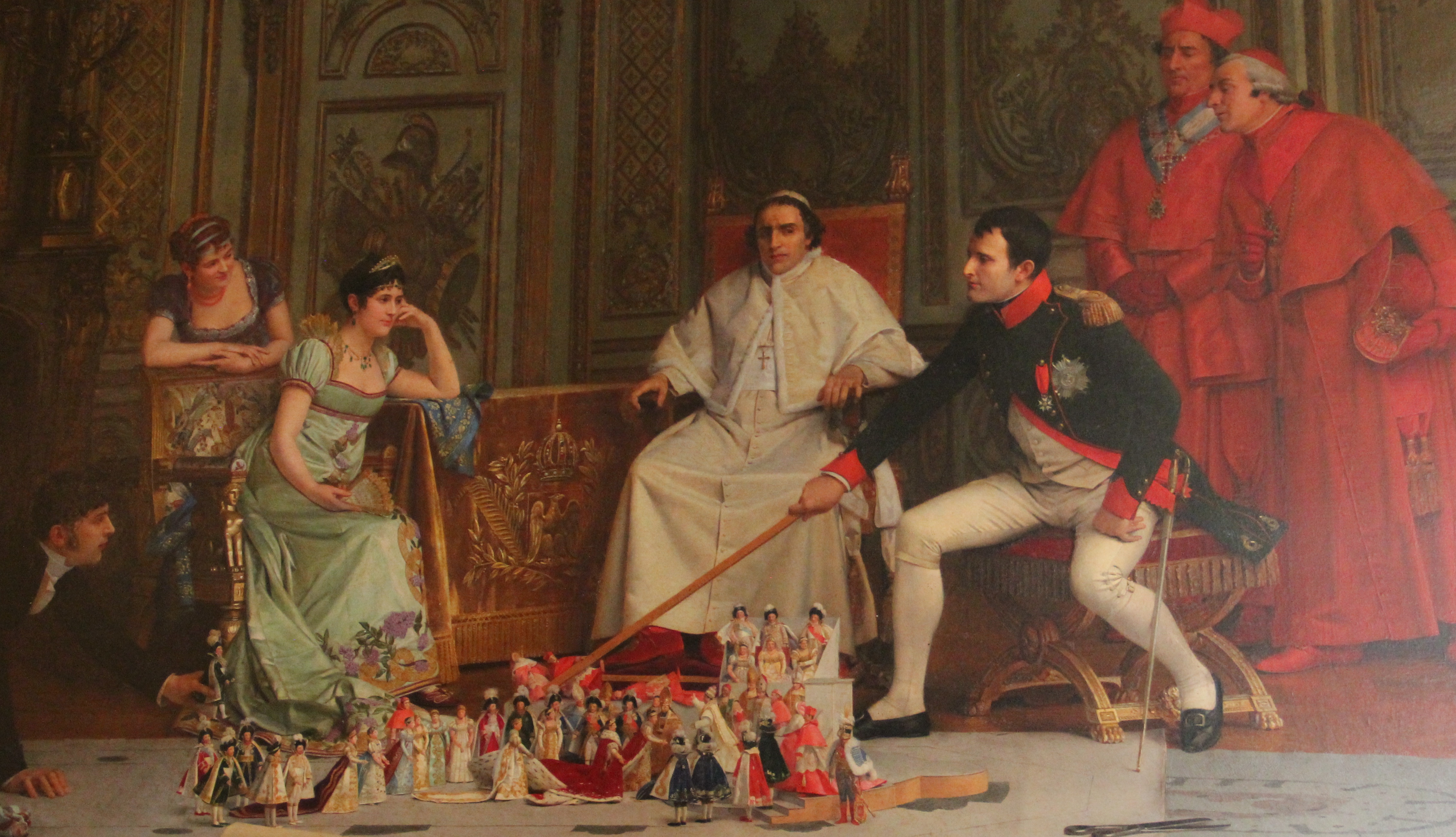My April 2018 blog post, FINDING NAPOLEON IN CUBA PART 3, is about Jean-Georges Virbert’s painting of “Napoleon Planning His Coronation” (below). It hangs in Havana, Cuba, at the Museo Napoleónico.

This post will make more sense if you first read FINDING NAPOLEON IN CUBA PART 3. In that post, I also discussed Virbert’s second rendering of the same scene (shown below at right).
My colleague Luke Dalla Bona just sent me some interesting additions and corrections. (Luke, who’s doing research on the Museo’s collection, also provided three photos for my NAPOLEON IN CUBA PART 4 posting.)
LUKE’S COMMENT ON “NAPOLEON PLANNING THE CORONATION”
“The copy is smaller (approximately 40% the size of the original) and is on canvas as opposed to the wood of the original. The first and only time the copy was publicly displayed was at the St Louis World’s Fair but it was in the collection of the Ed. Pinaud perfume company of Paris. It then passed to a private Chicago collector, and then to another private collector in 1975. In April 2009, it was sold by Sotheby’s into private hands for $84,100.00.
The original (in the collection of the Museo Napoleonico) was likely first purchased by J.P. Morgan, the wealthy American industrialist. Morgan had a rather large collection of other Vibert paintings. Upon his death, the painting was bequeathed to his daughter, Juliet P. Hamilton (nee Morgan).
After her death, this painting was put up for auction by Hamilton’s estate in January 1953, with the Parke Bernet Galleries in New York. It sold for $9,250 to Oscar Cintas, the former Cuban ambassador to the United States, prominent railway and sugar magnate, and patron to the arts.
In his lifetime, Cintas assembled an art collection considered to have no rival in Latin America. In addition to artwork, he collected manuscripts that included the only first edition of Don Quixote known at the time and the final manuscript of Lincoln’s Gettysburg Address, which is now displayed in the Lincoln bedroom at the White House in Washington. With the Cuban Revolution of January 1959, Cintas’ properties were claimed by the Cuban government and “Napoleon Planning His Coronation” was deposited in the newly established Museo Napoléonico in Havana.”
Thanks for the clarification, Luke!
So, while much of the Museo Napoleónico’s collection comes from the sugar magnate Julio Lobo, this Napoleon painting belonged to a different Cuban sugar magnate, Oscar Cintas. Unlike Lobo, Cintas must have moved much of his wealth out of Cuba before the Revolution. To this day, the U.S.-based Cintas Foundation supports Cuban artists. In 2009, the Foundation gave a Lifetime Achievement award to curator and artist Margarita Cano, who many years before had worked in (what the Foundation’s website calls) the “Julio Lobo Napoleon Museum.”
A DIVERSION FROM NAPOLEON BONAPARTE
In 1957, one year before the Cuban Revolution formed the Cuban socialist state, Cintas died. He willed his copy of the Gettysburg Address to the American people. While it has nothing to do with Napoleon Bonaparte, that succinct document merits re-reading. Here’s a transcript from the Smithsonian Institution’s website:
“Four score and seven years ago our fathers brought forth on this continent, a new nation, conceived in Liberty, and dedicated to the proposition that all men are created equal.
Now we are engaged in a great civil war, testing whether that nation, or any nation so conceived and so dedicated, can long endure. We are met on a great battle field of that war. We have come to dedicate a portion of that field, as a final resting place for those who here gave their lives that that nation might live. It is altogether fitting and proper that we should do this.
But, in a larger sense, we can not dedicate—we can not consecrate—we can not hallow—this ground. The brave men, living and dead, who struggled here, have consecrated it, far above our poor power to add or detract. The world will little note, nor long remember what we say here, but it can never forget what they did here. It is for us the living, rather, to be dedicated here to the unfinished work which they who fought here have thus far so nobly advanced. It is rather for us to be here dedicated to the great task remaining before us—that from these honored dead we take increased devotion to that cause for which they gave the last full measure of devotion—that we here highly resolve that these dead shall not have died in vain—that this nation, under God, shall have a new birth of freedom—and that government of the people, by the people, for the people, shall not perish from the earth.”
Abraham Lincoln.
November 19, 1863.
